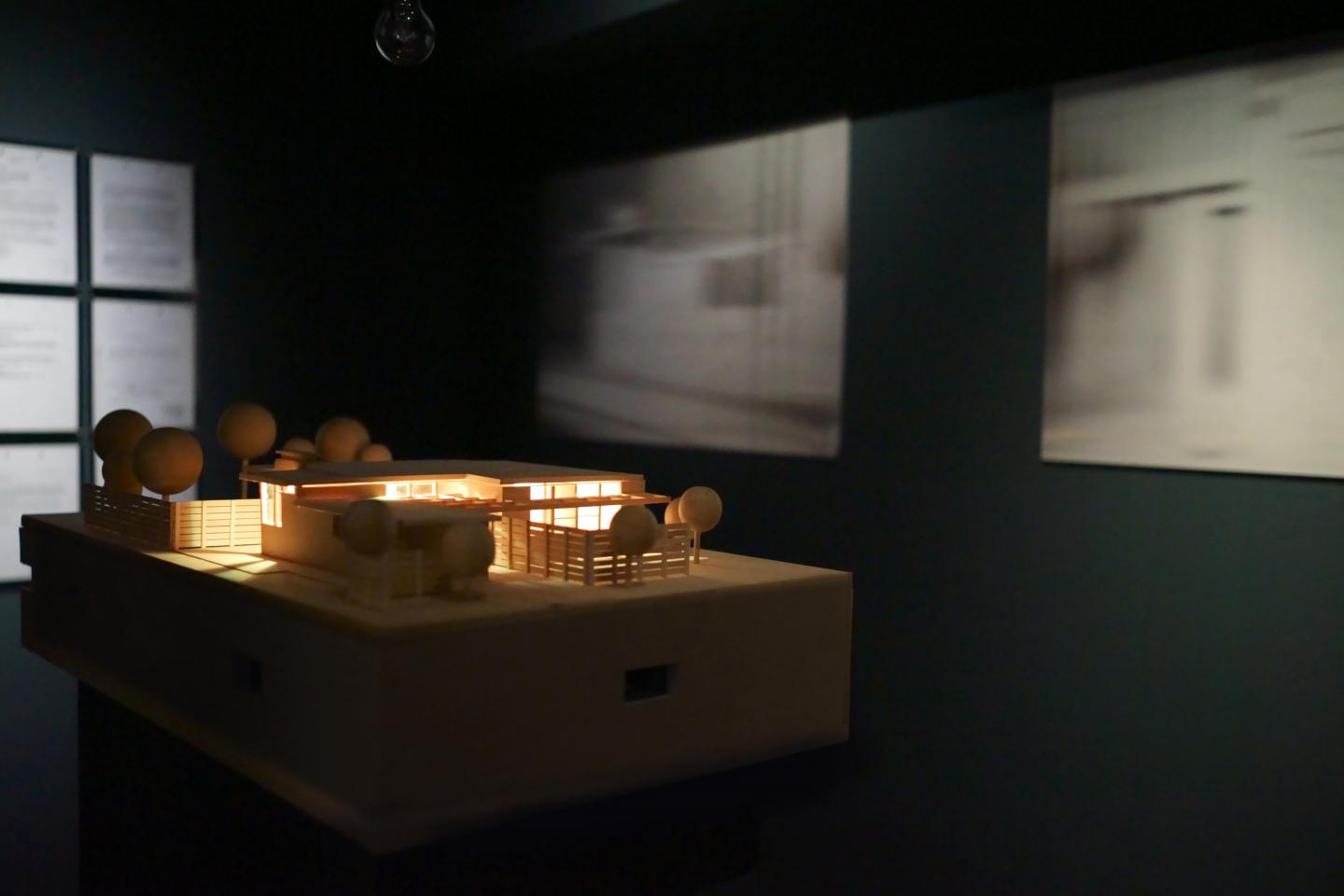This Future has a Past..., was originally created by architect Katherine Lambert, AIA and director/artist Christiane Robbins, for the 15th International Architecture la Biennale di Venezia, 2016 TSE Exhibition. Following its debut It was then curated by Cynthia Davidson to be the inaugural exhibition for ANYSPACE and shown at the Center for Architecture, New York in 2017.
The cross-disciplinary installation unmasks the mythic histories of American individualism and an unbridled capitalism in mid-century America. These narratives are coupled with the scarred community underpinnings of mid-century housing that unfold within the elusive backstories of mid-century, Los Angeles architect, Gregory Ain. In the late 1940’s Ain’s practice had been ensnared by a blinding vortex of a post WW II housing crisis, a heady economic gold rush and a rapid- fire surge of housing
development - sound familiar?
“This Future has a Past” posits new insights to Ain’s surprising selection by Philip Johnson, Director of Architecture at MoMA to design its 2nd Exhibition House in the Garden, 1950, entitled “Our View of the Future .” This view of housing and a materialization of participatory democracy unexpectedly proved to be dramatically short- lived.
Images of FBI surveillance documents were obtained through a long awaited FOIA release. These documents depicted Ain’s alleged ‘un-American activities during a period of approximately 20 years. This compilation of research, documentation and images of their installation provides a captivating narrative of a little known aspect of Gregory Ain’s career and offers a measure of understanding as to why the FBI regarded Ain as ‘the most dangerous architect in America.’
The evocative landscape of this installation, This Future Has a Past, allows us to unmask and re-imagine a narrative of architectural disappearance. It considers an extraordinary moment in the 20th century United States - when a “progressive “ approach to urban planning in the form of “community modernism,” social justice and housing was widely held. Tracing this vital and all-but-forgotten milieu - it reveals an intimate liaison of an architecture caught within the rupturing social and political topographies of the mid-20thc United States that closely mirror those of today. A mode of visceral self- questioning is actuated one that is without the burden - the singularity - of a formal history and, yes, new histories emerged.
2016
2018
Cross disciplinary Installation including an interactive architectural model, sound and Digitally rendered large-scale Prints.
Katherine Lambert, AIA
Christiane Robbins
J.D. Zamfirescu-Pereira
Shuzhen Yao
Shinya Kobayashi
Hoang Thong Nguyen


